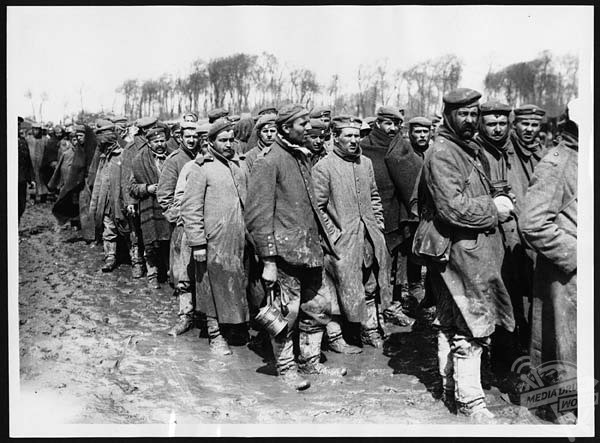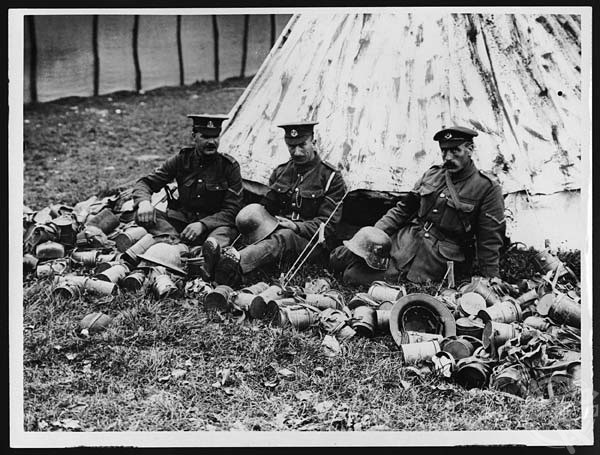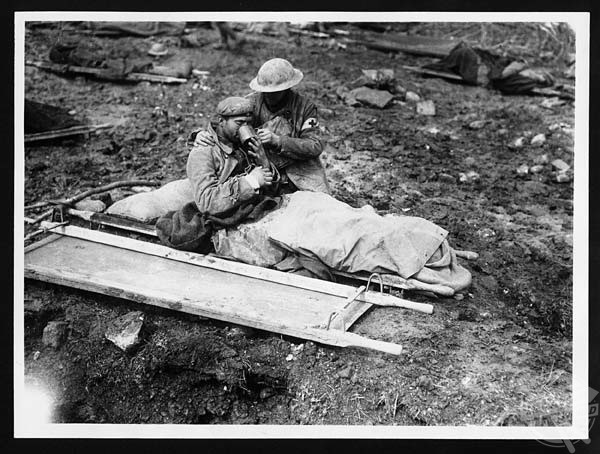By Alex Jones
REMARKABLE 100-year-old photos portray the experience of hundreds of thousands of German Prisoners of War captured by Allied Forces.

Haunting images from the Great War include a dismayed-looking soldier staring hopelessly at the photographer; three injured teenage Germans broodily contemplating their fate; and doleful captives tightly surrounded by bundles of barbed wire after surrendering to British forces.
Another striking shot shows a huge crowd of captured German soldiers being processed by the British Army, hinting at the scale of internments in the First World War.

Throughout the course of the Great War, between 8 and 9 million men were taken prisoner. A soldier’s chances of survival depended heavily on who they were captured by and where they were from. For German soldiers, to be caught by the British was a fairly good deal – all things considered – with only 3 per cent of POWs dying in captivity. By comparison, one in six Italians died at the hands of the Central Powers and many more Austro-Hungarian forces faced freezing or starving to death at the hands of the Russians. Britain also took a duty of care for their prisoners, whilst other fighting powers – such as The Ottoman Empire – did not.

POWs were not supposed to carry out work that was directly connected to their enemy’s war effort – but this rule was not always adhered to, even by the British. Many POWs were forced to labour for their captors often in unsafe, unhygienic camps very near the front line where shellfire and gas attacks were common – often as stretcher bearers for the wounded or as engineers securing the trenches. By 1917, some prisoners were also working in primary industries in the UK such as agriculture, forestry or mining – industries badly short of manpower due to the war effort. Other countries had used foreign manpower before 1917 but trade unions in Britain were keen to ensure that their members did not have their jobs taken off them.

Although the conditions in these fascinating shots, part of the National Library of Scotland’s online archive, look quite reasonable, it is worth bearing in mind that many of these photographs were taken in a bid to boost morale on the home front and show the world that the UK was not mistreating its POWs.






